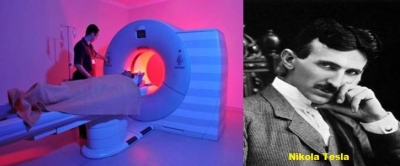
Magnetic Resonance Imaging, or MRI, is a valuable clinical and research tool. It gives a visual representation of organs and structures in the body.
Magnetic resonance imaging was made possible when Nikola Tesla first discovered the rotating magnetic field in 1882. Nearly one hundred years later in 1977, an American physician, Raymond Vahan Damadian invented the first MRI scanning machine. He was the first to perform a full body scan on a human being with a resultant diagnosis of cancer.
An MRI scanner consists of a long tube that the patient is inserted into. Here the patient is subjected to a very strong magnetic field and radio waves are applied in different directions. This causes atoms in the patient’s body to emit special signals which are detected by the MRI scanner and sent to a computer. Based on the data the computer creates an image of the part of the body to be scanned.
Although it is more expensive than other procedures, a major advantage of MRI is that dangerous X-ray radiation can be avoided. MRI’s are used to study the brain, spinal cord, bones, joints and internal organs. It is an extremely accurate diagnostic method and an invaluable tool for disease detection.
The development of MRI revolutionized the medical world. Since its discovery, MRI scans not only assist in medical procedures but also aid in research.
Picture Credit : Google




